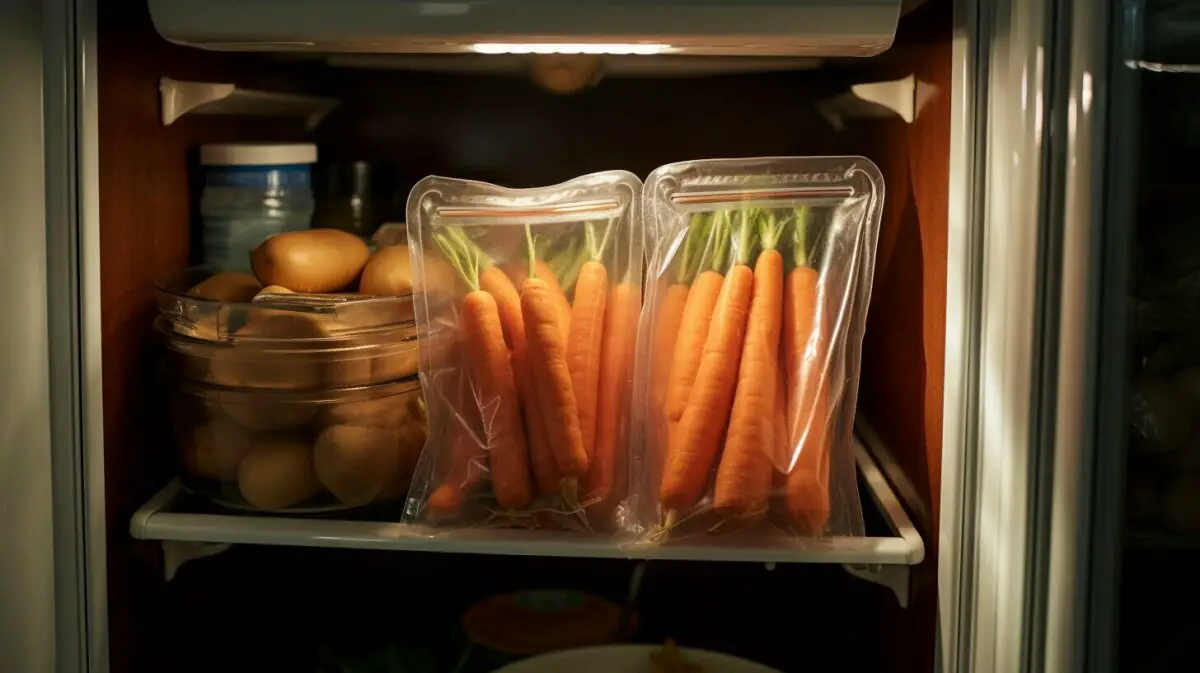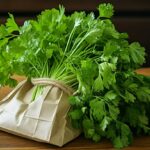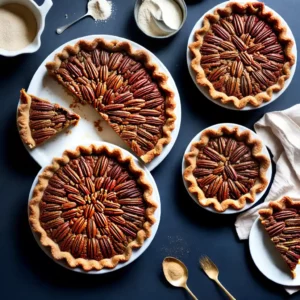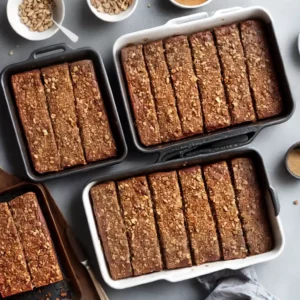How to Store Carrots
Storing carrots in a perfect way isn’t difficult! Let’s explore the best ways to store carrots to preserve their freshness.
How to Store Carrots – Key Takeaways:
- Store whole unpeeled, unwashed carrots in a container or bag filled with fresh water in the fridge to keep them crisp for up to 4 weeks.
- If the carrots have already been cut, store them submerged in water in the fridge for 2-3 weeks.
- Freeze grated carrots straight from fresh, while other cuts (diced, sliced, julienned) may need blanching before freezing.
- Check for signs of spoilage, such as dark spots, softness, or a moldy odor, before consuming carrots.
- Avoid washing carrots before storing them to help them last longer, as the waxy layer on the surface acts as a natural preservative.
Storing Carrots in the Fridge: Water Method
To keep your carrots fresh in the fridge, try storing them in water. This method helps maintain their moisture and crispness, ensuring they stay fresh for up to 4 weeks. It’s a simple and effective way to extend the shelf life of your carrots and keep them tasting great.
Here’s how to store whole unpeeled, unwashed carrots using the water method:
- Fill a container or bag with clean, cold water.
- Place the whole carrots in the container, ensuring they are completely submerged in the water. You can also use a plastic bag filled with water and tie it securely around the carrots.
- Store the container or bag in the fridge. Make sure to change the water every 4-5 days to keep the carrots fresh and crunchy.
For storing carrot sticks or baby carrots, you can follow the same water method. Simply cut the carrots into the desired size, place them in a container or bag with water, and store them in the fridge.

Storing Carrots in the Fridge: Submerged Method
Wondering how to store cut carrots? The submerged method in the fridge is the answer. This method is perfect for storing diced, sliced, or julienned carrots, ensuring they remain fresh and crisp for an extended period of time.
To store cut carrots using the submerged method, start by placing them in a container or airtight bag. Fill the container or bag with enough water to completely cover the carrots. The water acts as a barrier, preventing the carrots from drying out and maintaining their moisture content.
Once the carrots are submerged, seal the container or bag tightly and place it in the fridge. They can be stored like this for 2-3 weeks. However, it’s important to change the water every few days to keep it fresh and prevent any bacterial growth.
When you’re ready to use the carrots, simply remove them from the container or bag, pat them dry with a paper towel, and they’re ready to be incorporated into your favorite recipes. The submerged method is a convenient and effective way to store cut carrots, ensuring they stay fresh, crunchy, and full of flavor.
| Method | Storage Duration | Benefits |
|---|---|---|
| Submerged Method in the Fridge | 2-3 weeks | Retains moisture and crispness |
| Water Method in the Fridge | Up to 4 weeks | Preserves freshness and flavor |

Freezing Carrots for Long-Term Storage
To enjoy carrots in the long term, freezing is an excellent preservation method. Freezing helps retain the texture and flavor of the carrots, making them a convenient option for future use. Whether you have grated carrots or other cuts like diced, sliced, or julienned carrots, freezing can help extend their shelf life.
To freeze grated carrots, simply place them in a freezer-safe bag or container and freeze them straight from fresh. Grated carrots can be easily used in recipes such as carrot cakes or muffins. It’s recommended to freeze them in small portions, so you can easily take out the required amount whenever needed.
For other cuts of carrots, such as diced, sliced, or julienned carrots, it’s important to blanch them before freezing. Blanching helps preserve the quality and texture of the carrots. To blanch carrots, bring a pot of water to boil and cook the carrots for 3-4 minutes. Then, transfer them to an ice water bath for another 3-4 minutes to stop the cooking process. Once cooled, pat them dry and freeze on a parchment paper-lined baking sheet. This prevents the carrots from clumping together, allowing you to easily take out the desired amount from the freezer.
| Freezing Method | Steps |
|---|---|
| Freezing Grated Carrots | 1. Place grated carrots in a freezer-safe bag or container. 2. Seal the bag or container, removing as much air as possible. 3. Label with the date and freeze. |
| Freezing Diced, Sliced, or Julienned Carrots | 1. Blanch carrots in boiling water for 3-4 minutes. 2. Transfer carrots to an ice water bath for another 3-4 minutes. 3. Pat dry with a paper towel. 4. Arrange carrots on a parchment paper-lined baking sheet. 5. Freeze for a few hours until firm. 6. Transfer to a freezer-safe bag or container. 7. Label with the date and freeze. |
While freezing carrots helps preserve their quality, it’s important to be mindful of freezer burn. Freezer burn occurs when the moisture on the carrots evaporates, leading to dry, discolored, and unappetizing spots. To prevent freezer burn, ensure that the carrots are tightly sealed in airtight bags or containers, removing as much air as possible before freezing. Additionally, consuming the frozen carrots within 8-12 months is recommended for the best quality.
By following these freezing methods and maintaining proper storage practices, you can enjoy the taste and nutritional benefits of carrots throughout the year. Whether you’re freezing grated carrots for baking or blanching other cuts for cooking, freezing is a convenient and efficient way to store carrots for long-term use.

Identifying spoiled carrots is essential to ensure food safety and quality. No one wants to bite into a rotten carrot! So, how can you tell if your carrots have gone bad? Here are a few key signs to look out for:
- Dark spots: If you notice any dark or discolored spots on your carrots, it’s a clear indication that they have started to spoil. These spots can be a result of mold or bacterial growth.
- Softness: A fresh carrot should be firm to the touch. If your carrots feel soft or mushy, it’s a sign that they have lost their crispness and are no longer suitable for consumption.
- Moldy odor: Give your carrots a sniff. If you detect a moldy or rotten smell, it’s a strong indication that they have deteriorated and should be discarded.
When checking for these signs, it’s important to note that carrots naturally have a small core in the center that may appear slightly darker in color. This is normal and not a sign of spoilage.
To help you visualize these signs, take a look at the table below:
| Signs of Spoiled Carrots | What it Indicates |
|---|---|
| Dark spots | Potential mold or bacterial growth |
| Softness | Loss of crispness |
| Moldy odor | Deterioration and potential rot |
Remember, when it comes to storing carrots, prevention is key. Proper storage techniques and regular checks can help you avoid spoilage and enjoy fresh, crunchy carrots every time.

The type of container you use to store your carrots can make a difference in their shelf life. Choosing the right storage container helps regulate moisture levels and prevents the carrots from drying out or becoming too moist. Here are some ideal carrot storage containers:
- Airtight Plastic Bags: These bags provide a sealed environment that helps maintain the freshness and crunch of carrots. Make sure to remove any excess air from the bag before sealing it.
- Paper Bags: If you prefer an eco-friendly option, paper bags are a good choice. They allow proper airflow, preventing moisture buildup and extending the shelf life of your carrots.
- Perforated Bags: Carrots need some airflow to stay fresh, and perforated bags provide just that. The small holes allow air circulation while preventing excessive moisture loss.
- Plastic Containers: Sturdy plastic containers with tight-fitting lids are another excellent option for carrot storage. These containers keep the carrots protected and maintain their freshness.
When using any of these storage containers, it’s essential to store the carrots in the refrigerator. The cool temperature helps slow down the deterioration process, keeping your carrots crisp and flavorful for longer.
“Choosing the right storage container helps regulate moisture levels and prevents the carrots from drying out or becoming too moist.”

Remember, proper storage containers play a vital role in maintaining the quality and freshness of your carrots. By using airtight plastic bags, paper bags, perforated bags, or plastic containers, you can significantly extend the shelf life of your carrots and enjoy them in various culinary creations.
Carrot Storage Temperature and Humidity
The temperature and humidity levels are crucial factors in carrot storage. Proper control of these conditions can help extend the shelf life of carrots and preserve their texture and flavor. Here are the ideal storage temperature and humidity ranges to ensure your carrots stay fresh and delicious:
| Temperature | Humidity |
|---|---|
| 32°F to 36°F (0°C to 2°C) | 90% to 95% |
Storing carrots at temperatures close to freezing helps slow down the deterioration process and inhibits the growth of bacteria. The high humidity levels prevent the carrots from drying out and maintain their crispness. It is important to note that storing carrots at temperatures below 32°F (0°C) can cause the cells to freeze, leading to a loss of texture and flavor.
To create the ideal storage environment, you can use airtight plastic bags or containers with perforations to allow proper airflow. This will help control both temperature and humidity levels, ensuring optimum conditions for carrot storage.
Carrot Storage Tips:
- Store carrots in the crisper drawer of your refrigerator, which provides a slightly higher humidity level than the main compartment. This will help maintain their crisp texture and prevent them from drying out.
- Avoid storing carrots near ethylene-producing fruits like apples and pears, as they can accelerate the ripening process and cause the carrots to become limp.
- Keep carrots away from strong-smelling foods like onions, garlic, or leeks, as they can transfer their flavors and odors to the carrots.
- Ensure that the storage area is clean and free from any moisture or condensation, as excess moisture can cause carrots to rot.
By following these temperature and humidity guidelines, along with proper storage techniques, you can enjoy the freshness and crunchiness of your carrots for an extended period.

If you’re looking for alternative storage methods, here are some options to consider for storing your carrots:
- Storing Carrots in Sand: Sand is an excellent natural storage medium that helps maintain the freshness and moisture of carrots. Simply bury your carrots in a box filled with sand, ensuring that they are well-covered. Store the box in a cool, dark place, like a root cellar or a cool basement. This method can keep your carrots fresh for several months.
- Storing Carrots in Soil: Another option is to store your carrots in soil. Similar to the sand method, bury your carrots in a container filled with loose soil, making sure they are completely covered. Keep the container in a cool, dark place, and remember to check the carrots regularly for any signs of spoilage or decay.
- Storing Carrots in Sawdust: Sawdust can be used as an effective storage medium for carrots as well. Place your carrots in a container or a wooden box and cover them with sawdust, ensuring they are completely submerged. Store the container in a cool area, such as a basement or garage, and monitor the carrots for any changes in quality.
- Storing Carrots in the Crisper Drawer: If you prefer storing your carrots in the fridge, the crisper drawer is the ideal spot. This compartment provides the right level of humidity and temperature control to keep your carrots fresh for an extended period. Make sure to store them in a perforated plastic bag or wrapped in a damp paper towel to maintain the necessary moisture.
- Storing Carrots in a Root Cellar: A root cellar is a traditional underground storage area that helps maintain a cool and consistent temperature, perfect for storing root vegetables like carrots. Bury your carrots in layers of sand or soil in a designated root cellar space and monitor their condition regularly.
- Storing Carrots on the Counter: If you plan to use your carrots within a week or so, storing them on the kitchen counter is a convenient option. Keep them in a cool, dry area away from direct sunlight. Remember to monitor their freshness regularly to ensure they don’t spoil.
- Storing Carrots in the Pantry: If you don’t have a root cellar, you can store your carrots in a cool, dark pantry as an alternative. Ensure the pantry has consistent temperature levels and low humidity to maintain the freshness of your carrots.
Remember to consider the specific conditions and storage requirements of each method to ensure optimal carrot storage. By utilizing these alternative methods, you can enjoy fresh and flavorful carrots for an extended period.

Pairing carrots with certain fruits and vegetables can enhance their storage longevity. When stored together, carrots can benefit from other produce items that help maintain their freshness, texture, and flavor. Here are some great combinations:
- Carrots with Apples: Apples release ethylene gas, which can help slow down the ripening process of other fruits and vegetables. This gas can also help keep carrots crisp and prevent them from becoming soft or mushy.
- Carrots with Potatoes: Potatoes emit natural gases that can help prevent carrots from sprouting or developing green spots. Storing carrots alongside potatoes in a cool, dark place can help extend their shelf life.
- Carrots with Onions: Onions possess antimicrobial properties that can help inhibit the growth of bacteria and fungi. Storing carrots with onions can help prevent spoilage and maintain their freshness for a longer period.
By combining carrots with these complementary produce items, you can create an optimal storage environment that helps prolong their shelf life. Remember to store them in a cool, dark place and ensure proper ventilation to maintain freshness.
Table: Produce Combinations for Carrot Storage
| Produce Combination | Benefits |
|---|---|
| Carrots with Apples | Prevents softness and maintains crispness |
| Carrots with Potatoes | Prevents sprouting and green spots |
| Carrots with Onions | Inhibits spoilage and extends freshness |
“Pairing carrots with apples, potatoes, or onions can enhance their storage longevity by preventing softness, sprouting, and spoilage.”
It is important to note that while these combinations can help prolong the shelf life of carrots, it is still essential to regularly check for signs of spoilage. Be sure to remove any spoiled or damaged produce to prevent it from affecting the quality of the other items.

If you love carrot sticks or baby carrots as on-the-go snacks, learn how to store them to maintain their crispness. Proper storage methods will ensure that these smaller carrot varieties stay fresh and crunchy for longer periods. Here are some tips to help you store carrot sticks and baby carrots effectively:
- Keep them in the fridge: Carrot sticks and baby carrots should be stored in the refrigerator to maintain their texture and freshness. Place them in an airtight container or a resealable bag to prevent moisture loss and keep them from drying out.
- Use a paper towel: To help absorb excess moisture and keep the carrot sticks or baby carrots crisp, place a paper towel inside the container or bag. This will help prevent them from becoming soft or soggy.
- Separate larger carrots: If you have larger carrots that you’ve cut into sticks, it’s best to separate them from baby carrots. This is because larger carrots may release more moisture, which can affect the texture of the smaller carrots. Store them in separate containers or bags to maintain their individual freshness.
With these storage tips, you can enjoy the crunch and flavor of carrot sticks and baby carrots whenever you need a healthy snack. Remember to check them periodically for any signs of spoilage and discard any carrots that appear soft or have an off odor. Keeping your carrot sticks and baby carrots properly stored will ensure that they are always ready for you to grab and enjoy.
Proper Storage Duration for Carrot Sticks and Baby Carrots
The storage duration for carrot sticks and baby carrots will vary depending on the condition of the carrots and the storage method used. Generally, if stored properly in the fridge, carrot sticks and baby carrots can stay fresh for up to two weeks.
It’s important to note that the longer you store them, the more the quality may deteriorate. Over time, carrot sticks and baby carrots may become slightly softer or lose some of their crispness. However, they should still be safe to eat as long as they don’t exhibit any signs of spoilage.
With these simple storage techniques, you can keep your carrot sticks and baby carrots fresh, crunchy, and ready to enjoy whenever you need a healthy snack!

The decision to retain or remove carrot greens before storage can affect the freshness and longevity of the carrots. Carrot greens, also known as carrot tops, are the leafy green parts attached to the carrot. While some people prefer to remove the greens for storage, others choose to keep them intact for various reasons.
There are a few factors to consider when deciding whether to leave the greens on or remove them. One consideration is the space available for storage. Carrots with greens attached can take up more room in the refrigerator, especially if you have a large quantity. Removing the greens can help save space and make storage more efficient.
Additionally, carrot greens can draw moisture and nutrients from the carrot roots, potentially causing them to dry out faster. If you plan to store the carrots for an extended period, it may be beneficial to remove the greens to preserve the freshness and prevent the carrots from becoming wilted.
On the other hand, some people choose to leave the greens on for aesthetic purposes or to indicate the freshness of the carrots. The vibrant green tops can be visually appealing and indicate that the carrots are freshly harvested. However, it is essential to note that the greens should be fresh and healthy, as wilted or yellowed greens may indicate that the carrots are past their prime.
Carrot Greens: To Keep or Remove?
In summary, the decision to keep or remove carrot greens before storage depends on personal preference and storage conditions. If you have limited space or plan to store the carrots for an extended period, removing the greens may be the best option. However, if you value the aesthetics or want to showcase the freshness of the carrots, leaving the greens on can be a visually appealing choice.

Remember, properly storing carrots is crucial to maintaining their freshness and flavor. Whether you choose to remove the greens or keep them intact, follow the recommended storage methods to ensure your carrots stay crisp and tasty for as long as possible.
Storing Carrots for Different Culinary Uses
Storing carrots for different culinary uses requires specific methods to preserve their taste and texture. Whether you plan to use shredded carrots for salads or make a refreshing carrot juice, proper storage techniques are essential for maintaining their quality. Let’s explore the best methods to store shredded carrots and carrot juice.
If you have shredded carrots that you want to store, it is best to keep them in an airtight container or a resealable bag. This helps prevent moisture loss and keeps the shredded carrots fresh for longer. Make sure to remove any excess air from the container or bag to minimize oxidation.
When it comes to storing carrot juice, it is advisable to refrigerate it immediately after juicing. Carrot juice should be stored in a tightly sealed glass container or bottle to maintain its freshness and prevent the growth of bacteria. It is recommended to consume carrot juice within 2-3 days for the best taste and nutritional value.

In summary, storing shredded carrots involves keeping them in an airtight container or bag, while carrot juice should be refrigerated in a tightly sealed glass container. By following these storage methods, you can enjoy the delicious taste and nutritional benefits of carrots in your favorite culinary creations.
Storing Dehydrated Carrots
Learn how to store dehydrated carrots to enjoy their long shelf life and rehydrate them as desired. Dehydrating carrots is a great way to preserve their flavor and nutritional value. Once dehydrated, carrots can be stored for months, making them a convenient addition to your pantry.
To store dehydrated carrots, it is essential to keep them in airtight containers to prevent moisture or air from ruining their quality. Mason jars or food-grade plastic containers with tight-fitting lids are ideal for this purpose. Make sure to label the containers with the date of dehydration for easy reference.
When rehydrating dehydrated carrots, you have a few options. You can soak the carrots in water for a few hours until they become plump and tender. Alternatively, you can add them directly to soups, stews, or other dishes with sufficient liquid, allowing them to absorb moisture during the cooking process.
Not only do dehydrated carrots offer a long shelf life, but they are also a versatile ingredient. You can use them in various recipes, including stews, stir-fries, salads, and baked goods. The concentrated flavor of dehydrated carrots adds depth and sweetness to your favorite dishes, making them a valuable pantry staple.
| Storage Tips for Dehydrated Carrots |
|---|
| Store in airtight containers |
| Date and label the containers |
| Soak in water or add directly to dishes for rehydration |
| Use in various recipes for added flavor |
“Dehydrated carrots are a convenient pantry staple with a long shelf life. Store them in airtight containers, and you’ll always have a versatile ingredient ready to enhance your favorite recipes.”

Canning and Pickling Carrots for Long-Term Storage
Canning and pickling are fantastic methods for long-term storage of carrots while adding delicious flavors. These preservation techniques offer a wonderful way to extend the shelf life of carrots and enjoy their goodness throughout the year. Whether you prefer the tangy crunch of pickled carrots or the rich, savory taste of canned carrots, both methods provide unique benefits.
When canning carrots, it’s essential to follow proper techniques to ensure safety and quality. Begin by washing and peeling the carrots. Then, slice or dice them according to your preference. Next, pack the carrots into sterilized jars, leaving enough headspace for expansion during processing. Lastly, immerse the jars in a boiling water bath or pressure canner for the recommended time, ensuring that they reach the correct internal temperature.
On the other hand, pickling carrots involves preserving them in a brine or vinegar solution, which enhances their flavor and adds a delightful tanginess. To make pickled carrots, prepare the brine by combining vinegar, water, sugar, and spices. Bring the brine to a boil, then pour it over the packed carrots in sterilized jars. Seal the jars with lids and store them in a cool, dark place for a few weeks to allow the flavors to develop.

Both canned and pickled carrots have an impressive shelf life. Properly sealed and stored canned carrots can last up to one year or more, while pickled carrots can be enjoyed for several months. These preserved carrots are not only convenient pantry staples but also versatile ingredients that can be added to salads, sandwiches, or enjoyed as a delicious snack.
How Long Do Carrots Last? General Shelf Life
Discover the typical shelf life of carrots and whether refrigeration is necessary. Carrots are a versatile and nutritious vegetable that can be enjoyed in various dishes, from soups and salads to roasted or steamed sides. To make the most of your carrots and avoid waste, it’s essential to understand their general shelf life and storage requirements.
When stored correctly, carrots can last for several weeks, ensuring you have fresh and crisp produce for your meals. Unpeeled, unwashed whole carrots can be stored in the refrigerator for up to four weeks by following a simple water method.
To utilize the water method, place your carrots in a container or bag filled with fresh water. Change the water every 4-5 days, and you’ll find that your carrots remain crispy and flavorful for an extended period. This method works well for carrot sticks and baby carrots too, ensuring you have healthy snacks on hand whenever you need them.
If you’ve already cut your carrots into smaller pieces, you can still store them in the refrigerator by submerging them in water. This method helps prevent the carrots from drying out and extends their shelf life to around 2-3 weeks. Whether you choose to store whole carrots or pre-cut pieces, it’s important to check for any signs of spoilage before consuming them. Look out for dark spots, softness, or a moldy odor, as these are indications that the carrots have gone bad.

Proper storage techniques can help preserve the freshness and quality of your carrots, ensuring they remain delicious and nutritious.
Refrigeration: Is It Necessary?
While refrigeration is not essential for all carrots, it can significantly extend their shelf life. If you plan on using your carrots within a week or two, storing them in a cool, dark place like a pantry or cellar can be sufficient. However, for longer-term storage, refrigeration is recommended to maintain their texture and flavors.
When refrigerating carrots, it’s best to keep them in a perforated bag or an airtight container to maintain their moisture levels. The cool temperature of the fridge helps slow down the natural deterioration process and keeps the carrots fresh for an extended period.
By understanding the general shelf life of carrots and the benefits of refrigeration, you can ensure that you always have fresh and flavorful carrots on hand. Whether you use them in salads, stews, or as a healthy snack, proper storage techniques will help maximize their shelf life and nutritional value.
How to Store Carrots – Conclusion
With these expert tips, you can store your carrots perfectly and enjoy their freshness for weeks to come.
Firstly, if you have whole unpeeled, unwashed carrots, store them in a container or bag filled with fresh water in the fridge. Change the water every 4-5 days to keep them crispy for up to 4 weeks. If your carrots have already been cut, you can store them submerged in water in the fridge for 2-3 weeks.
If you want to store carrots for even longer, freezing is a great option. Grated carrots can be frozen straight from fresh, while other cuts like diced, sliced, or julienned carrots may need blanching before freezing. To blanch carrots, boil them for 3-4 minutes, then transfer them to an ice water bath for another 3-4 minutes to stop the cooking process. Once cooled, freeze them on a parchment paper-lined baking sheet before transferring to a freezer-safe bag or container.
When checking for bad carrots, look out for dark spots, softness, or a moldy odor. It is best not to wash carrots before storing them, as the waxy layer on the surface helps them last longer.
How to Store Carrots – FAQ
Q: How should I store whole unpeeled, unwashed carrots in the fridge?
A: To store whole unpeeled, unwashed carrots in the fridge, place them in a container or bag filled with fresh water and keep it in the refrigerator. Remember to change the water every 4-5 days to maintain their crispiness. This method can keep carrots fresh for up to 4 weeks.
Q: Can I store cut carrots in the fridge?
A: Yes, you can store cut carrots in the fridge. Simply submerge them in water to prevent drying out. This method works well for diced, sliced, or julienned carrots and can extend their shelf life for 2-3 weeks.
Q: Can I freeze carrots for long-term storage?
A: Absolutely! Freezing carrots is a great way to store them for an extended period. Grated carrots can be frozen straight from fresh, while other cuts may need blanching before freezing. To blanch carrots, boil them for 3-4 minutes, then transfer them to an ice water bath for another 3-4 minutes. Once cooled, freeze them on a parchment paper-lined baking sheet before transferring to a freezer-safe bag or container.
Q: How can I tell if carrots have gone bad?
A: Look out for dark spots, softness, or a moldy odor when checking for spoiled carrots. If you notice any of these signs, it’s best to discard them as they may no longer be safe to consume.
Q: Should I wash carrots before storing them?
A: It’s best not to wash carrots before storing them, as the waxy layer on the surface helps them last longer. Simply store them as they are and rinse them right before using.
Our Friends:
Related Recipes:
 How to Store Parsley? (Perfect Every Time!)
How to Store Parsley? (Perfect Every Time!)
 How to Cut Carrots? (Perfect Step-By-Step Guide)
How to Cut Carrots? (Perfect Step-By-Step Guide)
 How to Freeze Bananas? (Perfect Step-By-Step Guide)
How to Freeze Bananas? (Perfect Step-By-Step Guide)
 How to Store Oranges? (Perfect Every Time!)
How to Store Oranges? (Perfect Every Time!)
 How to Freeze Oranges: Keep Citrus Fresh for Longer
How to Freeze Oranges: Keep Citrus Fresh for Longer
 How to Freeze Avocados? (Perfect Step-By-Step Guide)
How to Freeze Avocados? (Perfect Step-By-Step Guide)
 How To Freeze Rhubarb (Perfect For Long Term Storage)
How To Freeze Rhubarb (Perfect For Long Term Storage)
 How to Freeze Spinach? (Perfect Step-By-Step Guide)
How to Freeze Spinach? (Perfect Step-By-Step Guide)








